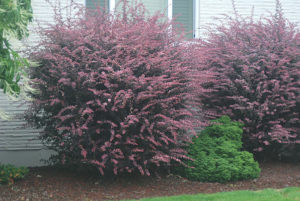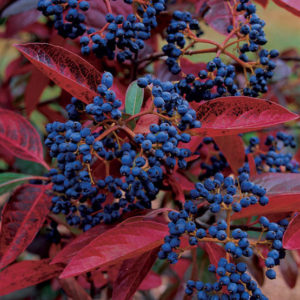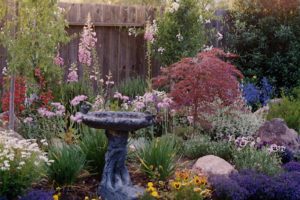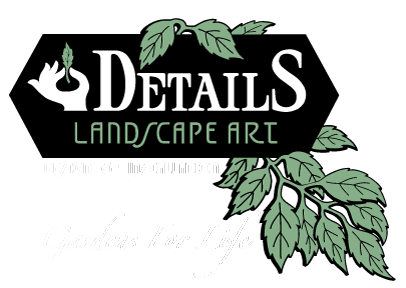Plant material that attracts birds is as varied as the birds themselves. One of birds’ most basic needs (as with all living creatures) is food. We discussed bird feeders as a way to supplement bird feeding in the garden, but the most primary source of food is the plant material that attracts birds.
This is the last blog in our current series of blogs about bird gardening. We love to write about the joys to the property owner and the benefits to the birds, not only to bird lovers, but hopefully to introduce non-bird loving gardeners to tis little corner of landscaping.
On July 12, 2016 we wrote a blog about Butterflies and Hummingbirds. We may duplicate a little of what we wrote, but hopefully will try to list the types of food that appeals to birds, and the plant material that supply that food. The plant material, including trees, shrubs, ground covers and vines will be limited to those which work well in our Sonoma County and Napa County locations, and to plant material we find readily available at local nurseries. And although plants and trees also provide shelter and nesting sites, the focus here is on the food they provide for the birds.
The primary diet of birds consists of berries, nuts, seeds and insects. Trees that provide berries and other fruit include dogwood (cornus), manzanita (arctostaphylos), hackberries (celtis), crabapples (malus) and cherry (prunus). Mature trees will yield late season berries that the birds can eat through late fall and winter, and in greater quantities than shrubs and ground covers. Various types of oaks (quercus) are the best source of nuts and insects in our area. And almost all trees, especially evergreens that drop leaves all year long, produce debris and leaf litter that are ideal homes for insects.
nuts, seeds and insects. Trees that provide berries and other fruit include dogwood (cornus), manzanita (arctostaphylos), hackberries (celtis), crabapples (malus) and cherry (prunus). Mature trees will yield late season berries that the birds can eat through late fall and winter, and in greater quantities than shrubs and ground covers. Various types of oaks (quercus) are the best source of nuts and insects in our area. And almost all trees, especially evergreens that drop leaves all year long, produce debris and leaf litter that are ideal homes for insects.
Shrubs that provide berries at various times of the year in our area include several forms of euonymus, barberries (berberis) and roses (rosa). Berries are actually smaller fruits and are attractive to birds whereas larger fruits such as pears or apples are more appealing to mammals. To produce more berries, the plants should be properly spaced, and planted in mass so there is abundant fruit production for lots of birds. And shrubs that produce nectar and pollen attract insects, and bees that, in turn, attract the birds.

All plant material produces some sort of flower. Some flowers are small and insignificant, while some flowers are large and showy. And every flowering plant ‘goes to seed’. These seeds are very attractive to birds, as are the insects that are also attracted to the flowers. Flowers that attract birds include the following annuals and perennials: cosmos (cosmos), marigolds (tagetes), sunflowers (helianthus), zinnia (zinnia), poppies (papaver), asters (asters), coreopsis (coreopsis), scabioses (scabiosa), and sedums (sedum). And yes, we know that the annuals listed here require replacement every few months. But the birds think it’s worth the extra work!

So go ahead and use a variety of plant material that attracts birds. You will have a garden full of liveliness and chirping!
